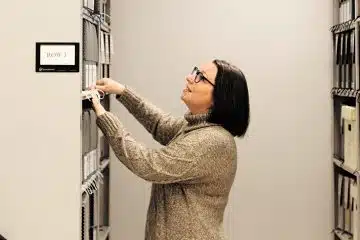Pro-life advocates express fears of fallout from Ohio abortion amendment adoption
Washington, D.C. Newsroom, Nov 8, 2023 / 14:21 pm
Pro-life organizations are expressing concern for families, women, and children after Ohio voters approved a referendum to enshrine a right to abortion in the state constitution.
“Our hearts are broken tonight not because we lost an election, but because Ohio families, women, and children will bear the brunt of this vote,” the board of directors for the pro-life coalition fighting the amendment adoption, Protect Women Ohio, said in a statement.
Nearly 4 million Ohioans went to the polls on Nov. 7 to vote on Issue 1, which passed by a margin of about 13 points: 56.6% of voters selected “yes” on the referendum, and only 43.4% selected “no” with more than 95% of the votes tallied.
The new amendment approved through the referendum will be added to the constitution 30 days after its adoption.
Many opponents of the amendment fear that its adoption will open the door to late-term abortion in Ohio and eviscerate parental consent and notification laws for minors who obtain abortions.
“When Michigan voters passed a similar amendment last year, they were sold the lie that parental rights would be unaffected, that late-term abortion would remain illegal, and that women’s health and safety standards would not be touched,” the Protect Women Ohio Board of Directors said in their statement.
“But just last week, the Michigan legislature voted to repeal penalties for partial-birth abortions, to eliminate health and safety protections at abortion facilities, and they called parental consent laws ‘unconstitutional,’” the statement added. “They even vowed to come for informed consent laws and 24-hour waiting periods next. We know the same barbaric attacks on parents and children are now coming home to Ohio.”
Jor-El Godsey expressed similar concerns about the amendment, saying in a statement that “Big Abortion won” and “women, parents, and babies lost.”
“Women lost common-sense protections,” Godsey said. “Parents have lost the ability to be involved in a key, and dangerous, component of their child’s medical and emotional health. And babies have been denied their bodily autonomy to grow as God intended. The work of pregnancy help will now be the only thing that can help women from the entrapment of the abortion profiteers.”
Although the amendment allows lawmakers to prohibit most abortions after “viability,” the amendment does not establish a clear cut-off for viability, instead allowing it to be determined by the mother’s treating physician, which is often the abortionist, on a “case-by-case basis.”
In addition, lawmakers cannot restrict post-viability abortions when the life or health of the mother is at risk. Similarly, a “health” risk is determined by the mother’s treating physician, which is often the abortionist.
The amendment does not include any language on parental rights or notification laws, but many pro-life groups have warned that the use of the word “individual” instead of “adult” or “woman” will give pro-abortion activists an avenue to argue against the constitutionality of those laws in court.
Pro-abortion organizations, such as the American Civil Liberties Union, praised the outcome of the referendum. In a statement, Deirdre Schifeling, the chief political and advocacy officer of the ACLU accused pro-life organizations of misrepresenting the amendment when voicing many of these concerns.
“The passage of a state constitutional amendment to protect the right to reproductive freedom in Ohio demonstrates the broad support for abortion care,” Schifeling said. “Knowing how deeply unpopular their agenda is in Ohio, anti-abortion politicians worked at every turn to lie and deceive voters and even tried to prevent them from having a voice. Thankfully, Ohioans saw through these tricks and turned out in droves to vote to protect abortion.”
In spite of the loss, pro-life activists remained optimistic about future referendum battles in other states. Susan B. Anthony Pro-Life America President Marjorie Dannenfelser said in a statement that the amendment failed, primarily because of misrepresentation from the pro-abortion side.
“There have been many valuable lessons learned from Issue 1,” Dannenfelser said. “Moving forward in states where abortion will be on the ballot in 2024, pro-life, pro-woman coalitions will need to devote more resources to compassionate pro-life messages for women and their children, combating the campaign of fear from the other side.”
Referendums related to abortion will appear on the ballots in Maryland and New York in 2024 and efforts are underway in at least nine other states to get referendums related to abortion on state ballots.













